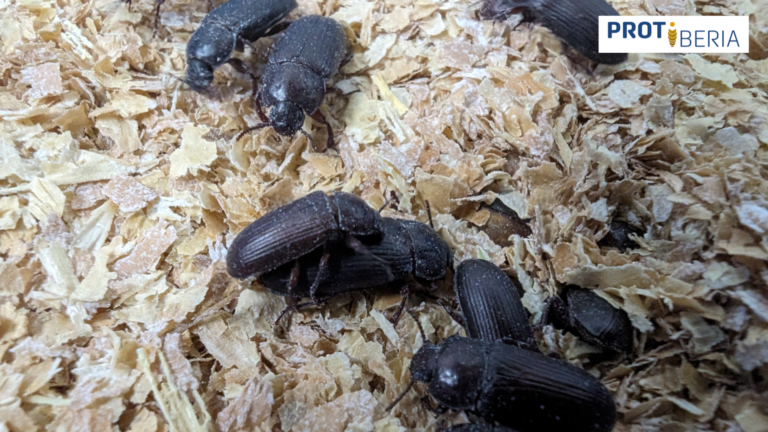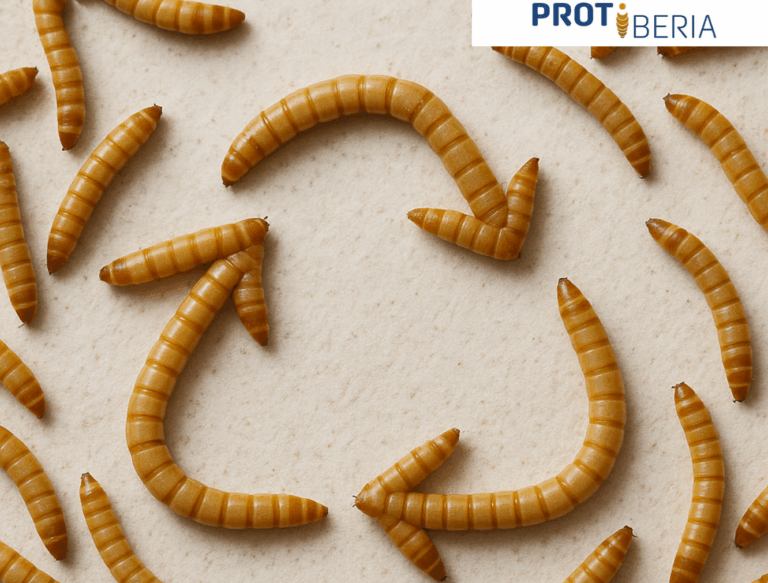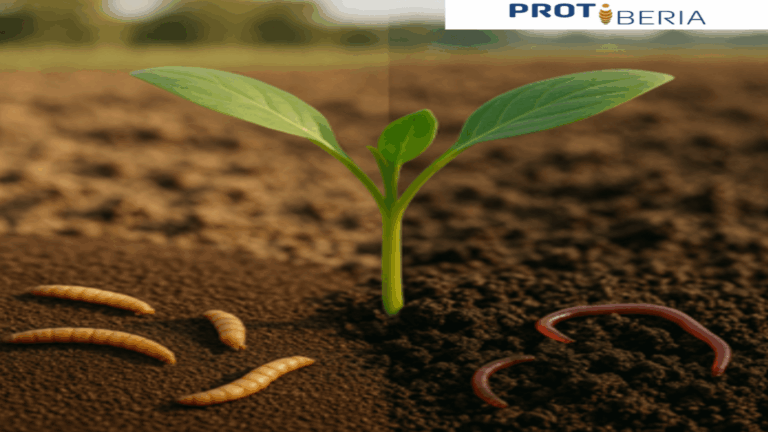| The pheromones produced by both males and females of the mealworm beetle, as well as certain behaviors to reduce competition and access to reproduction of males with females, play a fundamental role in the reproductive success of this insect. |
Like the vast majority of other species in the animal kingdom, beetles communicate among themselves and with individuals of other species through stimuli and signals. These stimuli in the animal kingdom can be of diverse nature, but the most abundant are usually visual stimuli (for example the size of the antlers of male deers to compete with other males in the courtship and mating with females) or chemical stimuli (a chemical substance generated to repel predators, for example), among others.
Role of pheromones in reproduction
In the case of the mealworm beetle (Tenebrio molitor), chemical stimuli are very important in the entire reproductive process and behavior of the species, including courtship (choice of males and females to form reproductive pairs) and mating (fertilization of females by males). These stimuli are known as pheromones, and they are capable of determining the sexual behavior of males and females.

At least four different types of pheromones are known in the mealworm beetle:
- Two of them are produced and emitted by the adult females beetles. These pheromones attract males and encourage their sexual behavior (or in other words, they excite them!)
- The other two pheromones are emitted by the adult males beetles. One of them stimulates the mobility of the females and acts as an attractant so that they approach and remain close to the male beetle producing this pheromone. The other type of pheromone acts as an “antiaphrodisiac”, that is, the males produce this pheromone that they emit during mating with the female with the aim that the newly fertilized female does not feel like mating with other males in the surrounding area.
Reducing competition is the key
Another aspect in the reproduction behaviour of Tenebrio molitor is the tendency of females to reproduce many times with different males, which is known as polyandry (a female mates with different males in the same period of time), as opposed to polygyny (in which a male mates with different females in the same period of time).
Because of this, males have developed a behaviour called “postcopulatory mate guarding”. By this behaviour the male remains close to the female or in physical contact with her, after having mated with her, with the aim of preventing the female from mating again with another male.
This behaviour aims to maximize a male’s chances of his sperm (and therefore his genes) fertilizing the greatest number of the female’s eggs and not having to compete with the sperm of another male. Therefore, it is a behaviour to reduce competition (in this case sperm) with other males.
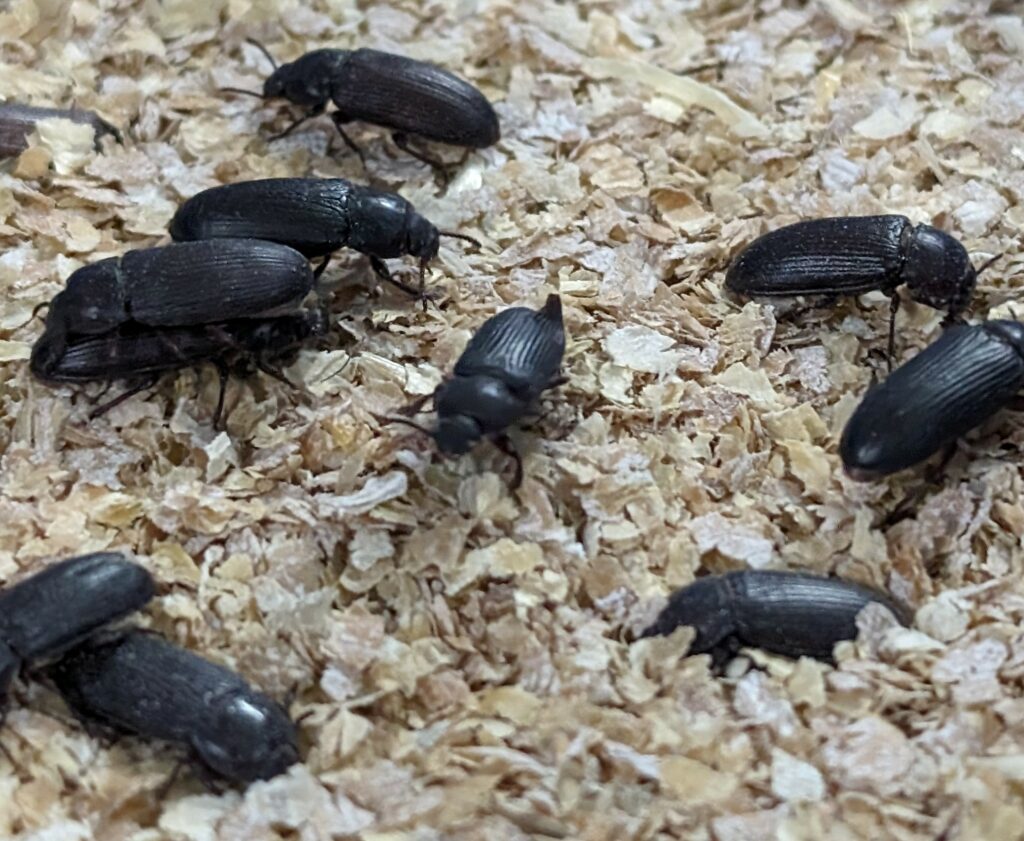
Another strategy adopted by males to leave as many offspring as possible and transmit their genes is to repeatedly mate with the same female in order to saturate the female’s reproductive tract with their sperm and prevent the sperm of other males from entering and competing.
All these adaptations in reproduction are strategies to reduce competition and ensure the transmission of genes from the most adapted males: survival of the fittest!
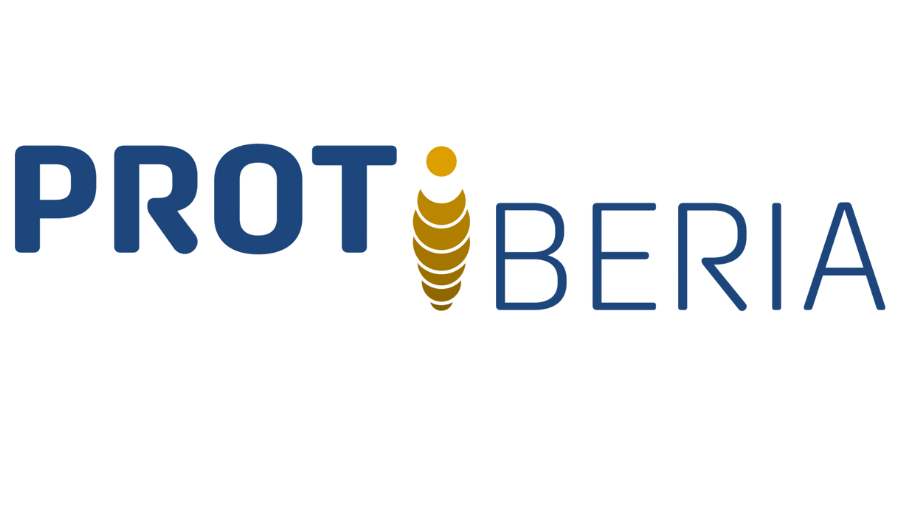
At Protiberia we believe that it is very important to know the biology of our Tenebrio, and more specifically, to study its reproductive and sexual behaviour. This allows us to rear our Tenebrio in the best conditions, maximizing its reproductive success and that of our company.
References
A Coleopterist’s Handbook. Jonathan Cooter(Editor), Maxwell VL Barclay(Editor): The Amateur Entomologist Series Volume: 11
